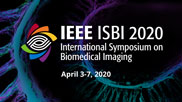Collection:

X-ray PCDs are highly desirable in applications of material decomposition, high-resolution and low-dose imaging due to their low-noise nature and energy discrimination capability. However, practical use of PCDs is limited by several technical issues, especially the spectral distortions caused by charge splitting (CS) (charge sharing, K-shell fluorescence escape or re-absorption) and pulse pileup effects. Here, we propose a deep neural network-based data correction method for the long-standing distortion problems. In this pilot study, we demonstrate the feasibility of the approach with realistic synthetic PCD data generated with our PCD detection model incorporating both CS and PU effects. The testing results suggest the trained network's ability of recovering ideal spectrum from distorted data within 6% error. Major fidelity improvements in both projections and reconstructions are also demonstrated with qualitative and quantitative comparisons.
- IEEE MemberUS $11.00
- Society MemberUS $0.00
- IEEE Student MemberUS $11.00
- Non-IEEE MemberUS $15.00
Videos in this product
X-ray Photon-Counting Data Correction via Deep learning
X-ray PCDs are highly desirable in applications of material decomposition, high-resolution and low-dose imaging due to their low-noise nature and energy discrimination capability. However, practical use of PCDs is limited by several technical issues, especially the spectral distortions caused by charge splitting (CS) (charge sharing, K-shell fluorescence escape or re-absorption) and pulse pileup effects. Here, we propose a deep neural network-based data correction method for the long-standing distortion problems. In this pilot study, we demonstrate the feasibility of the approach with realistic synthetic PCD data generated with our PCD detection model incorporating both CS and PU effects. The testing results suggest the trained network's ability of recovering ideal spectrum from distorted data within 6% error. Major fidelity improvements in both projections and reconstructions are also demonstrated with qualitative and quantitative comparisons.
 Cart
Cart Create Account
Create Account Sign In
Sign In
